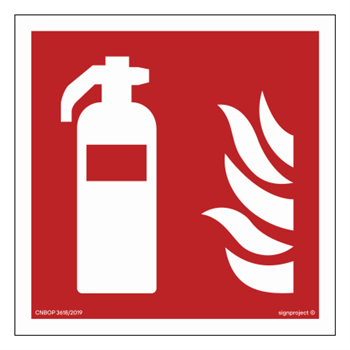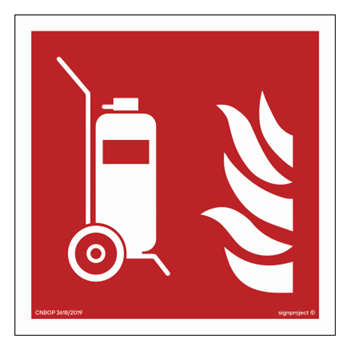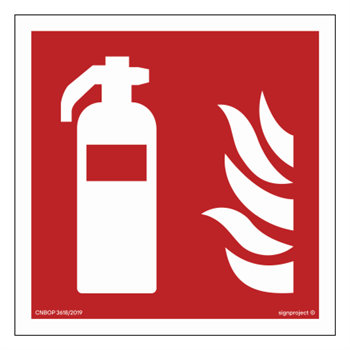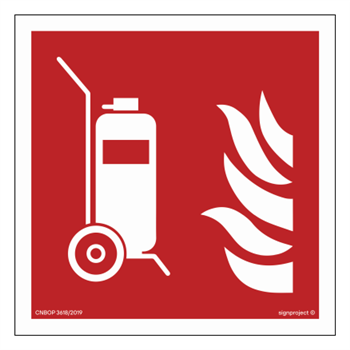Fire extinguishers - types and labeling

A fire extinguisher is an essential fire equipment that should be in every public building. It is necessary not only to equip schools, kindergartens, shopping malls or the office with it, but also to label it properly. It is imperative that it be in an easily accessible place in case of emergency. In addition, there must be a proper sign next to it that clearly indicates the presence of firefighting equipment.
Types of fire extinguishers
A fire is sometimes caused by a specific action taken by a person, other times the cause may not be known. In addition, the fire spreads very quickly, so it is important to respond as quickly as possible. Fire extinguishers differ not only in capacity, but especially in the extinguishing agent. Here they are:
- Powder extinguisher (GP) - is the most popular and widely used extinguisher. The extinguishing agent is a powder that is ejected using compressed gas. Works best when used in close proximity to the flame. It is an effective but difficult to remove fire extinguishing agent.
- Foam extinguisher (GW) - the extinguishing agent in it is foam, which is also ejected thanks to compressed gas. It is easy to remove after the flame is extinguished.
- Snow extinguisher (GS) - it's actually a CO2 extinguisher, because it contains liquefied carbon dioxide. As it is ejected from the cylinder, it reaches a temperature of -78˚C, resulting in a layer of dry ice on the surface.
- Halon fire extinguisher - the extinguishing agent is halons ejected by means of compressed gas, of course, and sometimes by the pressure of its own vapor. Halon production ended in 1994, but you can still buy such a fire extinguisher. However, its use is associated with a number of restrictions.
Which fire extinguisher to use? How to match a fire extinguisher to the type of fire?
Not every fire extinguisher can be used to put out every fire. Moreover, the use of the inappropriate one can result in a faster spread of fire and even compound the danger to humans.
Use a powder or foam extinguisher to extinguish solid materials (A) such as wood, paper or fabric. Liquids and melting solids (B), that is, paraffin and tar are extinguished with a powder, foam and snow extinguisher. For extinguishing gases (C), i.e.: propane, butane or acetylene, choose a powder or snow extinguisher. If there is a fire on metals (D), such as sodium, uranium or potassium, put out the fire with a powder extinguisher. Fats and oils from kitchen appliances (F) should be extinguished with a foam, powder or snow extinguisher marked F.
Marking the location of the fire extinguisher
This is determined by law, guidelines related to the labeling of firefighting equipment can be found in Annex IV to Directive 92/58/EEC. The signs help locate firefighting equipment more quickly, which also translates into more efficient firefighting and more effective rescue operations.
The location of the fire extinguisher shall be marked with a special sign BF001 Fire extinguisher. It has a red background on which the pictogram of the fire extinguisher and fire is visible. The border and pictograms can be made using photoluminescent technology, so that the sign is also visible in the dark. If there is a firefighting unit in the building, we mark it with a sign BF009 Fire extinguishing truck. It is in the same color scheme as the fire extinguisher sign, but there is a pictogram of a fire extinguisher on a cart and fire.
Not only does the mere presence of a fire extinguisher in a public building increase the chances of putting out a fire faster. It is also important to know how to use it, so it is a good idea to additionally include a brief instruction on how to use firefighting equipment.




